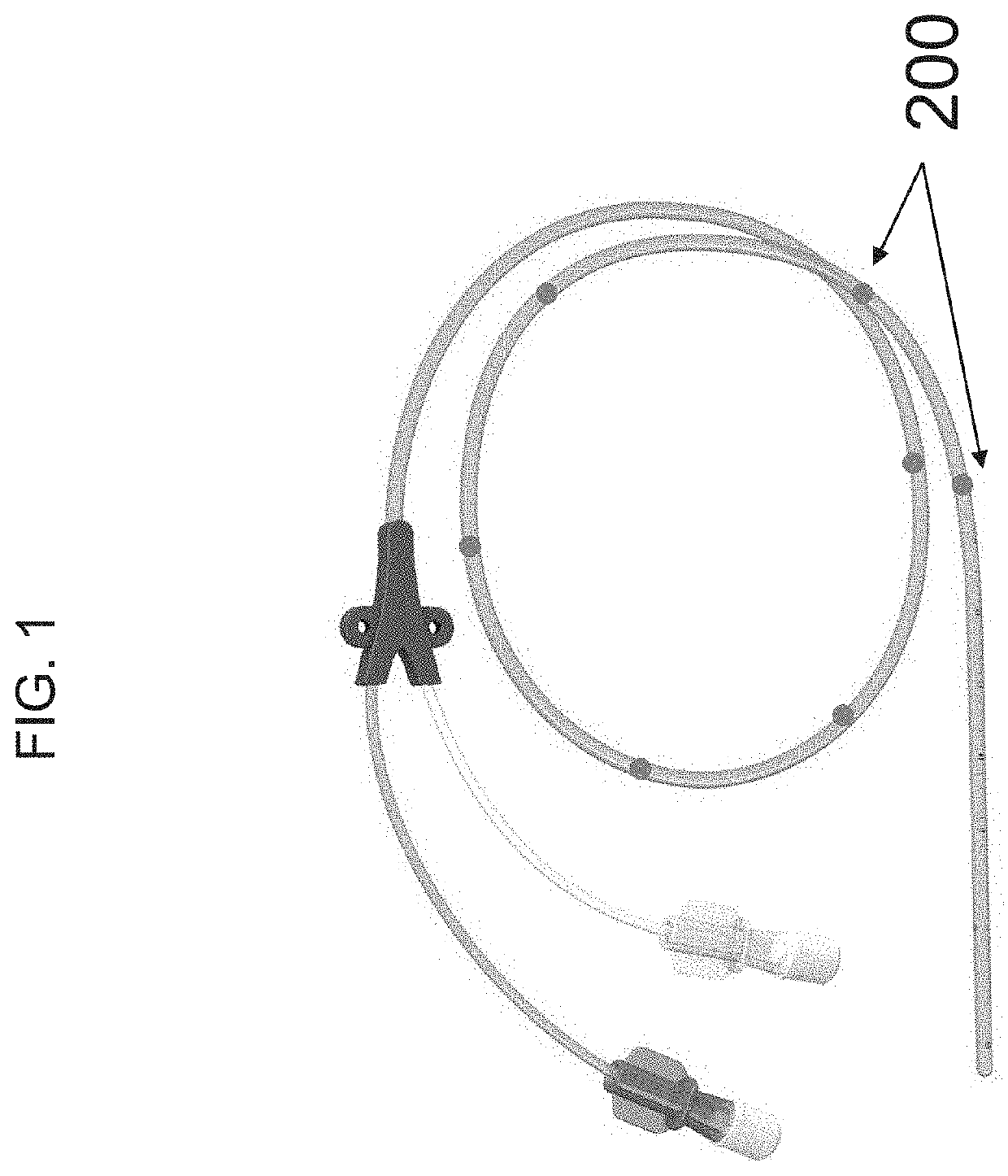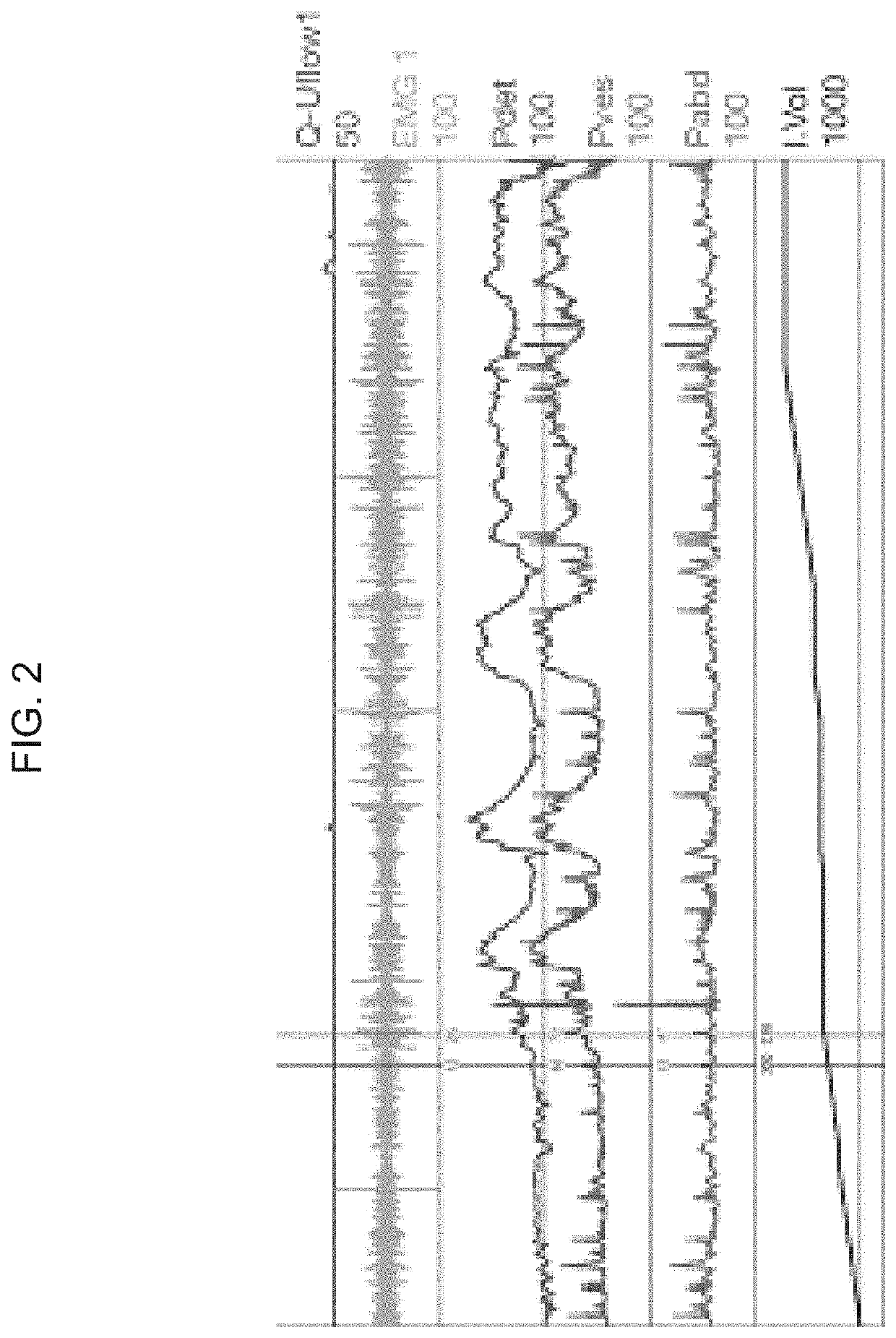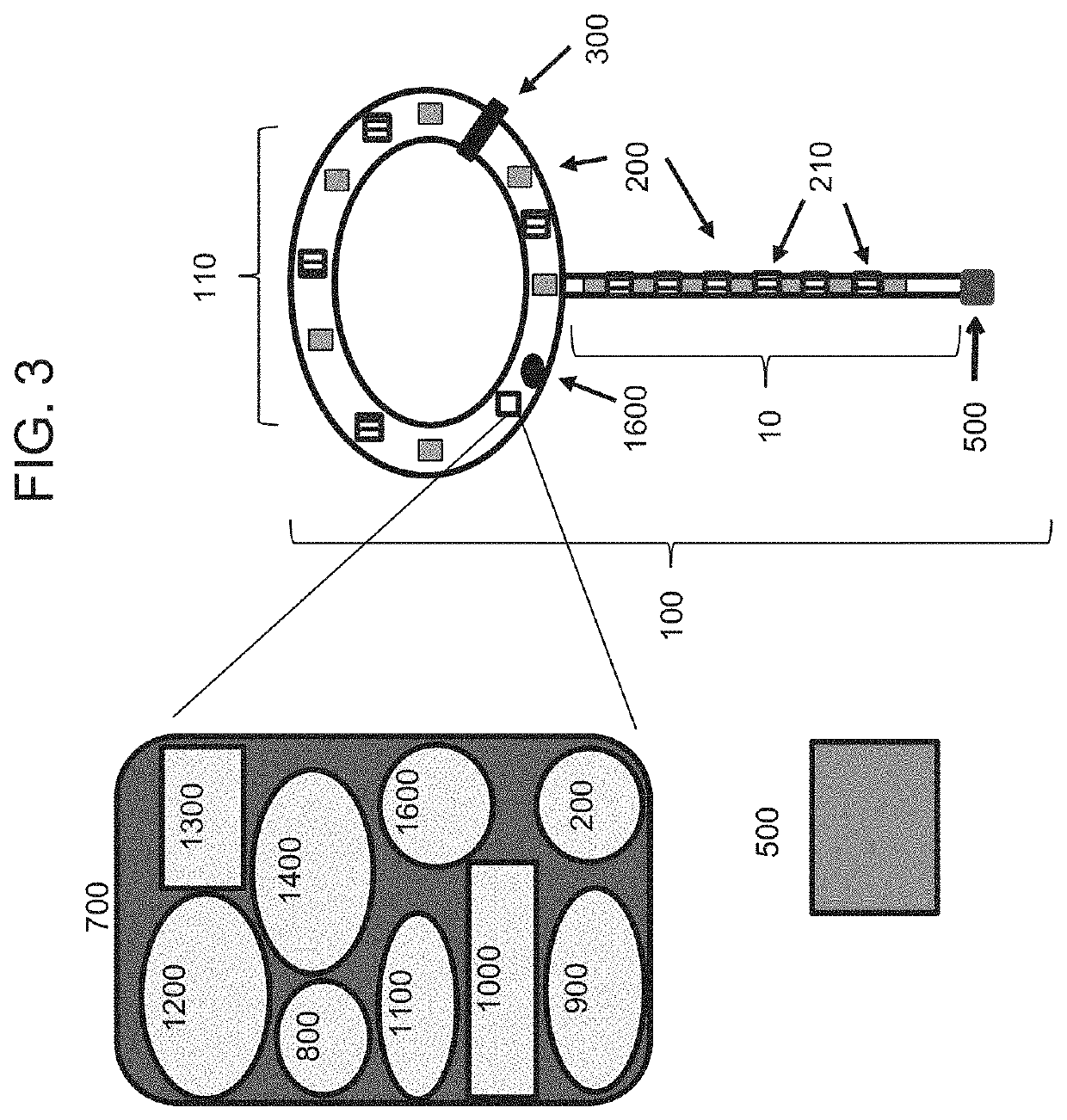Devices, systems, and methods for monitoring bladder function
a technology of bladder function and devices, applied in the field of devices, systems and methods for monitoring bladder function, can solve the problems that the bladder-based testing system is not able to identify or evaluate muscle motion or motion in the system, and achieve the effects of improving health and performance, improving control, and improving pelvic floor muscle strength
- Summary
- Abstract
- Description
- Claims
- Application Information
AI Technical Summary
Benefits of technology
Problems solved by technology
Method used
Image
Examples
example 1
Urodynamic Testing with a Positional Sensor Enabled Urodynamic Catheter
[0106]A female subject with urinary incontinence uses a positional sensor enabled urodynamic catheter (FIG. 1) during urodynamic testing. The urodynamic catheter includes a plurality of MEMS accelerometers located along a length of the device. A physician inserts the catheter in the subject and the subject urinates. The catheter measures flow and electrical activity of the muscles and nerves of the pelvic floor using electromyography (FIG. 2). The catheter also measures detrusor pressure, vesicular pressure, abdominal pressure and the volume of fluid in the bladder. The positional sensors on the catheter provide detailed visual information during bladder filling, emptying, and Valsalva. The characteristic patterns observed from the readout of the accelerometers indicates that the subject has urethral hypermobility.
[0107]An intravaginal and / or intrarectal device can also be used during urodynamics testing to obtai...
example 2
Using an Algorithm to Detect Pelvic Floor Movement
[0108]An intravaginal device having a plurality of MEMS accelerometers was inserted into the vagina of a female subject and the subject was asked to perform a series of pelvic floor movements (e.g., pelvic floor lift, pelvic floor relaxation, Valsalva maneuver, sustained pelvic floor lift, and serially repeated pelvic floor lift). Sensor angle (relative to the horizon) and position data from each MEMS accelerometer was collected. The angle data from each sensor was plotted as a function of time (FIG. 6).
[0109]Two composite scores, Y1 and Y2, were calculated from the angles (A) of sensors S5-S7:
Y1=A5+A6+0.6×A7
Y2=A5+A6−0.8×A7
A moving average of Y1 and Y2 (Y1_movmean and Y2_movmean) was calculated from three consecutive samples of Y1 and Y2. The moving average filter was used to reduce noise and minimize false positives. The filtered composite scores were plotted versus time (FIG. 7A) and a derivative of these data was plotted as a chan...
example 3
Detection of Pelvic Floor Movements During Daily Activities as a Measure of a Health State of a User
[0111]A user can insert an intravaginal device having a plurality of MEMS accelerometers into her vagina and the device can detect pelvic floor movements (e.g., pelvic floor lift, pelvic floor relaxation, Valsalva maneuver, sustained pelvic floor lift, and serially repeated pelvic floor lift) during her daily activities. A processor in the device, or in a peripheral device, such as a smartphone or wearable device (e.g., a watch) can process the data to calculate the occurrence of a pelvic floor event. Each MEMS accelerometer emits a signal corresponding to the position and sensor angle relative to the horizon. The angle data from each sensor is plotted as a function of time. The strength of the signal from each sensors is denoted by the change in angle (angle during pelvic floor lift—angle during pelvic floor relaxation). This signal strength is used to determine which sensors provide...
PUM
 Login to View More
Login to View More Abstract
Description
Claims
Application Information
 Login to View More
Login to View More - R&D
- Intellectual Property
- Life Sciences
- Materials
- Tech Scout
- Unparalleled Data Quality
- Higher Quality Content
- 60% Fewer Hallucinations
Browse by: Latest US Patents, China's latest patents, Technical Efficacy Thesaurus, Application Domain, Technology Topic, Popular Technical Reports.
© 2025 PatSnap. All rights reserved.Legal|Privacy policy|Modern Slavery Act Transparency Statement|Sitemap|About US| Contact US: help@patsnap.com



